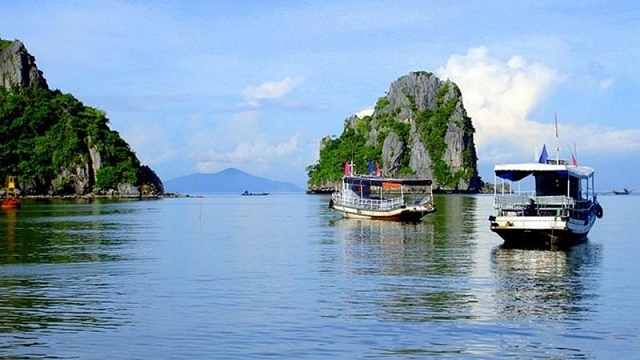


|
Hai Tac archipelago is dubbed as the "Ha Long of the southern region”, thanks to its pristine natural beauty and fresh and cool atmosphere. Ha Tien town was established in July 1998. The new Ha Tien city
will have a total area of 100.49km². It borders Giang Thanh district to the
east, the Gulf of Thailand to the west, Kien Luong district to the south and
Cambodia to the north.
It is located in the coastal economic belt of
Vietnam-Cambodia-Thailand, occupying an important position in the key
national tourism development area of Rach Gia - Ha Tien - Phu Quoc. It has
huge potential for development in tourism and border trade.
Ha Tien is a unique locality in the Mekong delta, host to
assorted types of terrain, ranging from plains and forests to seas and
islands.
Not only possessing a number of beautiful tourist attractions
such as Tam Bao pagoda, Phao Dai and Binh San mountains, Thach Dong and Da Dung
tourist sites, and Dong Ho lagoon, Ha Tien also attracts visitors to explore
the historical and cultural vestiges which mark significant historical
milestones in the ancestors’ journey to expand the territory.
Ha Tien welcomes travellers at any time of the year. During the
first lunar month, tourists can take part in an annual celebration to mark
the anniversary of the Chieu Anh Cac Literary Coterie, which was considered
as one of the country’s major literary forums in the first half of the 18th
century.
During the Thanh Minh (tomb sweeping)
celebration in the third lunar month, visitors can learn more about the
practice of visiting ancestors’ graves and the virtuous tradition of paying
gratitude to ancestors.
The end of the fifth and early sixth lunar months is the time
for locals to worship Mac Cuu, the founder of the land of Ha Tien, and his
family members.
In the ninth lunar month, Ha Tien is bustling with the Sene
Dolta Festival, a major event of the Khmer community to remember their
ancestors, with both traditional rituals and social activities.
The following month is dedicated to celebrating the Kathina
(robe offering), one of the official tradition rituals of Theravada Buddhism,
during which Buddhist followers donate new robes to the monks with the hope
that both devotees and recipients will gain merits.
Boasting an enchanting range of flora and fauna, Dong Ho lagoon is a perfect place for nature lovers to explore the ecological diversity. (Photo: vpubnd.kiengiang.gov.vn) One of the most visited tourist sites in Ha Tien is Dong Ho
lagoon, a wetland covering more than 1,300 ha in the west of the city.
Boasting an enchanting range of flora and fauna, the area is a perfect place
for nature lovers to explore the ecological diversity.
If one is tired of wandering in the forests, exploring caves and
lagoons, or visiting pagodas, one can enjoy the fresh air and take a tour to
Hai Tac (Pirates) archipelago, a famed place in the southwest sea of the
country.
The archipelago consists of 24 large and small islands, located
20km from Ha Tien Town and 40km from Phu Quoc Island.
Together with Ba Lua archipelago, Hai Tac is dubbed as the "Ha
Long of the southern region”, thanks to its pristine natural beauty and fresh
and cool atmosphere.
In December 2017, the Kien Giang provincial People’s Committee
recognised the archipelago as a local tourism site.
Thanks to its diverse tourism potential and efforts made by the
local authorities and people, Ha Tien has witnessed remarkable growth in
tourism over recent years, accordingly to Nguyen Thanh Nhan, Secretary of the
city Party Committee and Chairman of the city People’s Committee.
Accordingly, Ha Tien welcomes more than 2 million visitors every
year. There are over 160 tourism facilities operating in the city, which can
accommodate nearly 2,500 holiday makers.
Under its master plan on developing tourism, the city has set a
target of receiving 3 million visitors with total tourism revenues of VND2.7
trillion by 2020. The figures are expected to reach 4.4 million and VND9.4
trillion by 2025 and 6.4 million and VND34.5 trillion by 2030, respectively.
The recent National Assembly Standing Committee’s resolution on
the establishment of Ha Tien city will undoubtedly give a boost to the city’s
hospitality sector, contributing to realising the set targets.
|
Source: NDO